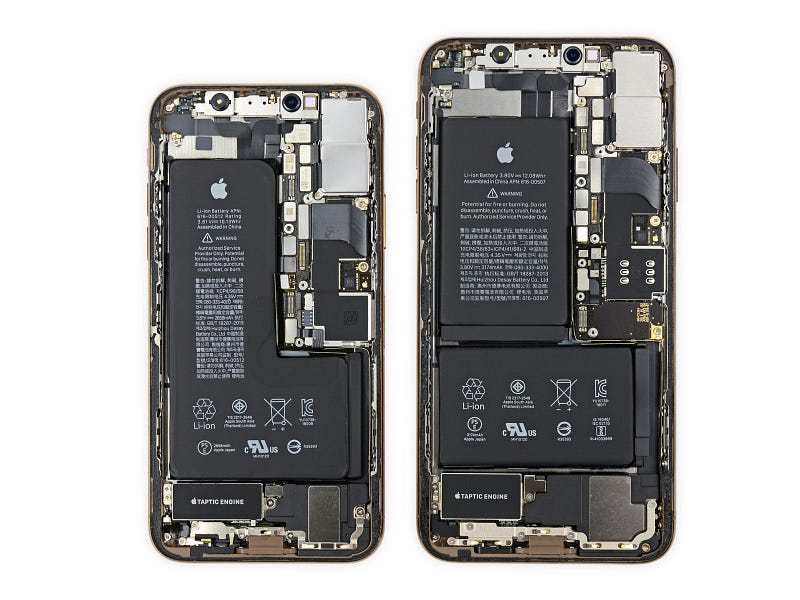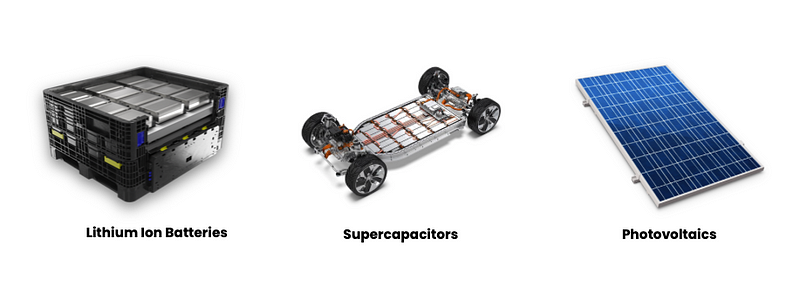The Future of Energy Storage: Can Viruses Lead the Way?
Written on
Understanding the Current Landscape of Energy Storage
Recent advancements in energy generation and storage have dramatically altered our interaction with technology. Modern smartphones now feature extended battery life, allowing us to utilize our devices more efficiently. This reliance on cutting-edge battery technology, especially lithium-ion batteries, drives consumers to invest in the latest models, often exceeding $1000.
Lithium-ion batteries, which employ liquid electrolytes to manage energy flow, are highly versatile and boast significant energy density.

Peering inside a smartphone reveals a compact lithium-ion battery, the powerhouse that keeps the device operational. These batteries are prized for their ability to deliver substantial energy without occupying much space, making them a staple in mobile technology.
However, over time, these batteries can fail to hold a charge effectively. They may start to resemble a volatile balloon, swelling dangerously as gas accumulates. Eventually, users might find their phones unexpectedly dying even with a remaining 20% charge.

At this juncture, the situation becomes perilous. Lithium-ion batteries can ignite or explode, especially when they swell. Users are left with two choices: buy a new phone and recycle the old battery or endure the diminishing charge until a potential disaster occurs.
The obvious choice is to purchase a new device, although replacing the battery is another option, albeit cumbersome and risky, especially for smartphones. The cycle continues as consumers pay upwards of $1,100 for devices that may encounter the same issues.
The urgency of seeking better energy storage solutions cannot be overstated, especially with the rising global demand for energy storage. To meet the anticipated 45% energy generation from renewable sources by 2030, the world needs 160 GW of battery storage. Currently, the global energy storage capacity stands at a mere 8 GW, leaving us significantly short with only nine years to bridge the gap.
Exploring Existing Energy Storage Methods
Presently, four primary energy storage techniques are in use:
- Mechanical Storage: This method stores energy by elevating water or solid materials, relying on gravitational forces.
- Thermal Storage: Energy from sunlight is converted into chemical energy through solar thermochemical energy storage (TCES).
- Chemical Storage: Commonly used batteries and capacitors exemplify this method, leveraging electrochemistry with liquid and solid electrodes and electrolytes.
- Electromagnetic Storage: Supercapacitors store energy through electric fields and charges, representing a promising solution.
Mechanical storage is predominantly achieved through pumped-storage hydropower (PSH), which can be challenging to manage due to its reliance on gravitational forces. Despite its popularity in the U.S. (90% penetration) and globally, it comes with significant logistical hurdles.
Thermal energy storage is also geographically dependent, making it unsuitable for all locations. The efficiency of thermal methods is often hampered by high costs and extended processing times.
Chemical energy storage, while widely adopted in consumer electronics, often faces challenges such as sensitivity to temperature fluctuations and environmental impact. Electromagnetic methods, while effective, are limited in their ability to store large energy quantities compared to chemical systems.
Each method presents unique challenges, necessitating extensive iterations to refine and improve their effectiveness.
Can Biology Offer Solutions?
What if we could harness alternative materials and processes, potentially even biological ones, to create more effective energy storage solutions? The following sections will explore:
- How energy storage functions.
- The intricacies of electronic testing.
- The potential role of viruses in energy solutions.
1. How Does Energy Storage Work?
Key concepts to understand include:
- Electrodes: Conductive coatings through which electricity flows.
- Electrolytes: Solutions that facilitate the movement of ions, essential for battery function.
- Energy Capacity: The total amount of energy a storage method can hold, determined by capacitance and operating voltage.
- Cell: The basic unit of energy storage.
Currently, energy storage relies heavily on batteries and supercapacitors. The latter is often seen as the next generation of energy storage, although batteries remain prevalent.
Batteries convert potential chemical energy into kinetic energy via chemical reactions, creating an electric current. Lithium-ion batteries, developed by researchers like John Goodenough and Koichi Mizushima, consist of an anode, cathode, separator, electrolyte, and current collectors.

These batteries are composed of several critical components that facilitate energy transfer. However, emerging technologies like solid-state batteries, which utilize solid electrodes and electrolytes, promise enhanced safety and longevity but require significant time and investment to reach market readiness.
In contrast, supercapacitors store energy through an electrostatic effect, allowing for high capacitance and rapid charging. Their advantages include lower weight, reduced costs, and longer lifespans compared to traditional batteries.

Despite their benefits, supercapacitors face limitations in energy storage capacity. Conventional batteries excel in compact energy storage, but they tend to be heavy, costly, and inefficient in charging speed.
2. The Challenge of Electronic Testing
Electronic tests are crucial for determining the viability of energy storage devices, akin to clinical trials for pharmaceuticals. These tests are time-consuming, costly, and labor-intensive, often exceeding $1 million and taking months to complete.
Testing methods include aging assessments, which gauge a supercapacitor's longevity and performance, and reliability enhancement tests (RET), which evaluate device durability under various conditions.

Accelerated lifetime tests and burn-in testing are also employed to predict product longevity and identify early failures. However, these methods can be resource-intensive and may not scale effectively with growing demand.
3. Are Viruses a Viable Solution?
In the quest for innovative energy storage solutions, biology may hold the key. The challenges of lengthy testing processes and the limitations of current technologies call for a fresh perspective.
By exploring biological systems, particularly viruses, we could potentially develop energy storage methods that bypass some of the traditional hurdles associated with electronic testing.
Stay tuned for the next installment, where I will elaborate on how funding has been secured to explore biologically-based energy generation.
Before You Go…
Thank you for diving into this exploration of energy storage technologies. I enjoyed crafting this article and look forward to sharing more insights. For additional information on biotech applications in energy storage, please visit my blog or connect with me on social media.

© 2020 by Okezue Bell. All Rights Reserved.
The first video titled "Are These Batteries The Future Of Energy Storage?" delves into cutting-edge advancements in battery technology and their implications for the future of energy storage.
The second video, "Future Batteries Could Be Made out of Viruses...Wait, What?" explores the intriguing concept of utilizing biological materials in battery production and energy storage.